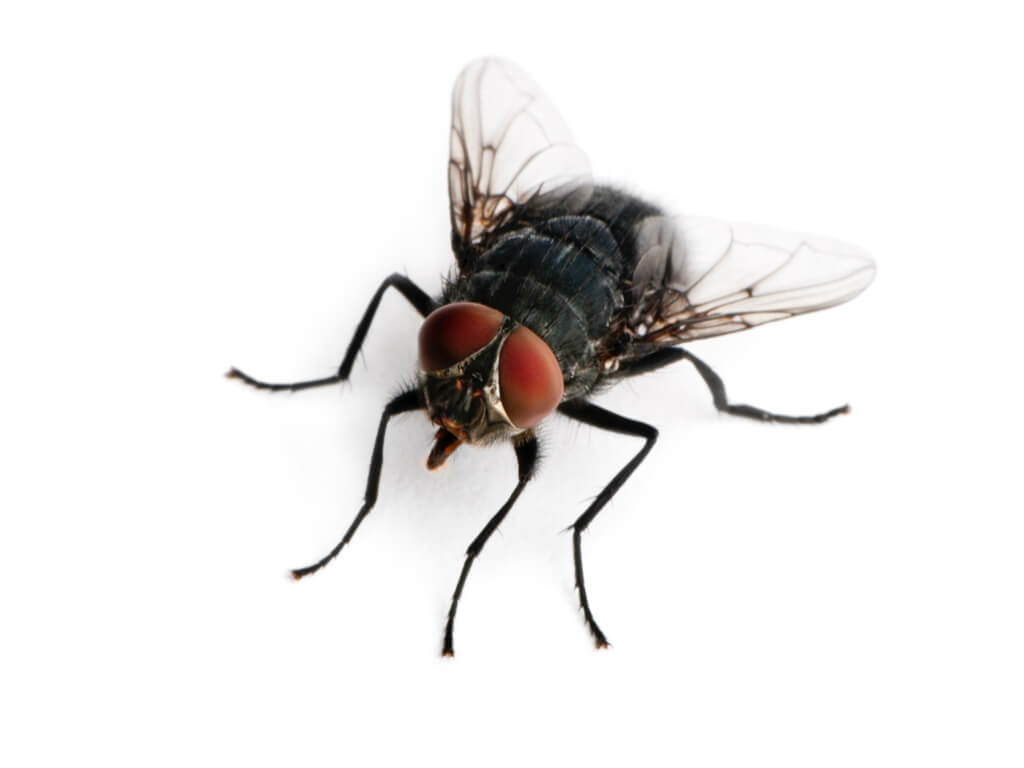The house fly is one of the most common insect species and can be easily cultivated on an industrial scale. Their cosmopolitan distribution makes their application universal by reducing the risk of inadvertent establishment in nature by escape from production facilities. In addition, they are small, require little space to grow, and increase at low temperatures, making their production more efficient.
Musca Domestica (housefly)
Amusca provides each Insect Breeding Module with a Musca Domestica population. In addition, Amusca develops a specialised variety of the Musca Domestica, to enhance the quantity and quality of the insect larvae.

Our main reasons for choosing the housefly
The choice of the housefly has been well-thought-out and is based on years of continuous research. We compared the housefly to many insect alternatives. But none of these insects could deliver such rich proteins as efficiently as the Musca Domestica. This is why we selected the Musca Domestica as our preferred production insect:
- Accepted native insects all over the world
- A short (4 days) growth cycle makes high levels of production possible
- The perfect Amino Acid profile
- Temperature flexible during the egg-laying process
- Loads of scientific research
- Energy neutral, no heat required at the start of the growth cycle
- Excellent insect for mass production of insects

Life cycle of the Musca Domestica
Houseflies occur in all seasons and can reproduce throughout the year. When the fly crawls out of the pupa, it takes about three days to mate. Mating always takes place on a solid surface and never in the air.
The female can produce more than 900 eggs deposited in smaller groups. The egg is strongly elongated and has a length of about 1.2 millimetres; the egg is white. After eight to 36 hours (depending on the temperature), the eggs hatch and become larvae. A newborn maggot is smaller than one millimetre, and a fully developed maggot is about one and a half centimetres long.
The maggot has three larval stages, also called the instars. The first or primary stage is the youngest and smallest; the larvae moult within a day, and the second stage is called the secondary larva and is already significantly larger. The third or tertiary stage of the maggot is the last larval stage. After two moults, the larvae pupate and go through an inactive phase called the pupal stage. When the larva has just pupated, the pupa is white-yellow like the larva. After a few hours, the pupa turns orange to deep red, and an older pupa is black-purple.
Musca Domestica is a safe insect
The adult flies are fed with human-grade food in the fly enclosure and egg laying unit. These measures ensure that the larvae are not contaminated with harmful bacteria and viruses.
The larvae of the housefly have the unique ability to kill bacteria, viruses and fungi through anti-microbial protein (AMP), among others.
Our quality and control systems, described in the GMP+ quality system, are designed to ensure the mix produced complies with current regulations. From 'COMMISSION REGULATION (EU) 2017/893 of 24 May 2017 amending Annexes I and IV to Regulation (EC) No 999/2001 of the European Parliament and the Council and Annexes X, XIV and XV to Commission Regulation (EU) No 142/2011.

Taxonomy of the housefly
- Kingdom: Animalia
- Phylum: Arthropoda
- Class: Insecta
- Order: Diptera
- Section: Schizophora
- Family: Muscidae
- Genus: Musca
- Species: Musca Domestica
